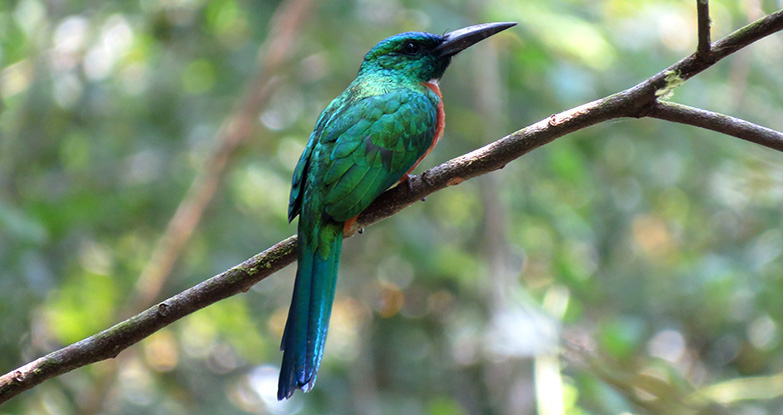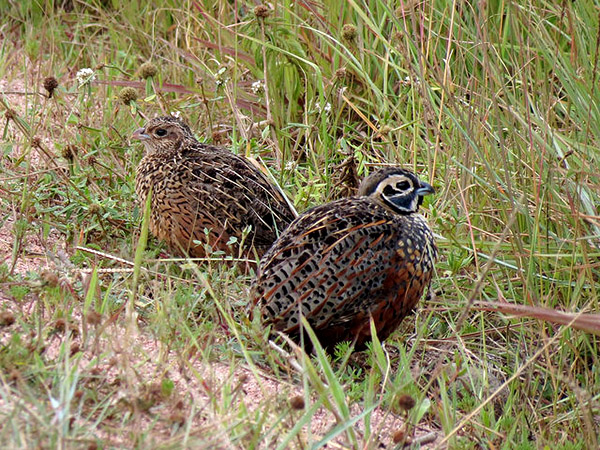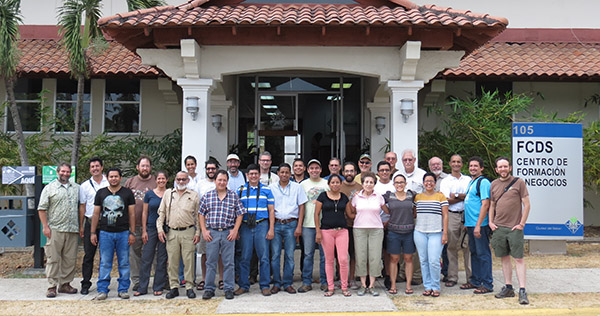Editor’s note: Rocky Mountain Bird Observatory facilitated a workshop in Panama in late March to assess the conservation status of the birds of Central America. The following article was originally published by Zamorano Biodiversity Center.
Bird experts have concluded that more than half of Central American bird species have shown sharp declines. More than 30 experts gathered in the City of Knowledge, Panama, to define the conservation status of avian populations in each Central American country. The meeting was the second step of an evaluation process for birds of each country that began in March 2014 and is projected to finish in 2016.
In the meeting, the experts analyzed and assessed threat levels and population trends for bird species in each Central American country. The national representatives, including biologists and wildlife authorities, will present the results in validation meetings in their respective countries during 2015.
During five days, more than 1,180 species of wild birds were evaluated by the specialists. Preliminarily, they found that 593 species (52%) appear to have strong or severe population declines in Central America, a worrying situation. In comparison, a similar analysis in Mexico and the rest of North America reported population declines of 40% of bird species, not including Central America. The population declines are associated with high rates of deforestation, agricultural expansion and urban growth of the last four decades in Central America. Another major threat identified by the experts is the lack of legal protection and forest rangers in many natural areas of the isthmus.
“We have not finished evaluating. We have other criteria to analyze and we cannot yet say what are the priority species for conservation in each country. However, our preliminary results clearly indicate that bird populations require much more conservation effort in Central America,” said Arvind Panjabi, workshop facilitator and international director at Rocky Mountain Bird Observatory.
“At first glance, the results we generated appear to indicate that, overall, bird populations are more vulnerable in Central America compared to Mexico and [the rest of] North America. Of highest concern are large birds of prey, such as the harpy eagle, other birds of the lowland tropical forests that are being rapidly deforested, and also the birds of cloud forests that are vulnerable to the effects of climate change,” said Oliver Komar, regional coordinator of the evaluation process and Professor of Natural Resources at the Zamorano University in Honduras.

Great Jacamar (Jacamerops aureus), like many birds of lowland tropical forests, has lost large tracts of habitat, and populations continue to be threatened in Honduras, Nicaragua, Costa Rica and Panama. Photo by Oliver Komar.

The Ocellated Quail (Cyrtonyx ocellatus) experienced severe declines and remains exposed to multiple threats in its territories in Nicaragua, Honduras, El Salvador, Guatemala and Chiapas, Mexico. Photo by John van Dort.
To assess population trends, the experts applied the same methodology developed by the Partners In Flight (PIF) program in the U.S. (RMBO maintains and houses the PIF database). They also consulted the eBird database of Cornell Laboratory of Ornithology (www.eBird.org/camerica), containing more than 3 million bird observations for Central America, generated by professional scientists and amateur citizen birdwatchers. This source of free information is widely used in the world and in Central America as a platform for information on the distribution and abundance of birds.
The workshop was organized by the Zamorano Biodiversity Center (Honduras), Rocky Mountain Bird Observatory (USA) and Conabio (CONABIO) (Mexico), with sponsorship of the governments of Canada, the U.S. and Mexico. Program sponsors included Environment Canada, Southern Wings Program (Missouri Department of Conservation), United States Geological Survey and CONABIO. The Ciudad del Saber Foundation also supported and helped organize the event.

Workshop participants, including bird experts and government representatives from seven countries in Central America, gathered in the City of Knowledge, Panama, in late March 2015.
For more information: Oliver Komar, Ph.D., Zamorano Biodiversity Center, Department of Environment and Development, Panamerican Agricultural School (Zamorano University), Honduras. Email [email protected].


